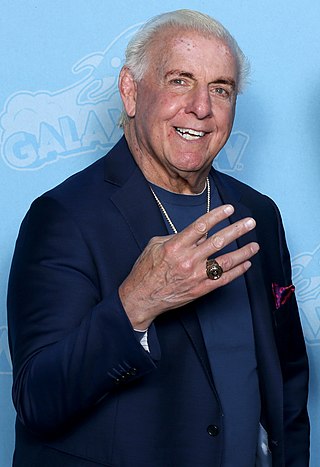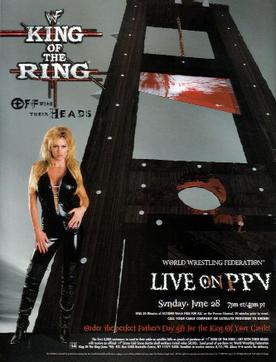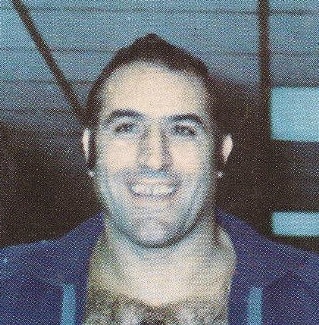
Michael Francis Foley is an American retired professional wrestler and author. He is currently signed to WWE, under the company's "Legends" program, acting as a company ambassador.

Richard Morgan Fliehr, known professionally as Ric Flair, is an American professional wrestler. Regarded by multiple peers and journalists as the greatest professional wrestler of all time, Flair has had a career spanning over 50 years in 6 decades.

The Montreal Screwjob was a notorious unscripted professional wrestling incident that occurred on November 9, 1997, at the Survivor Series pay-per-view event produced by the World Wrestling Federation in Montreal, Quebec, Canada. During the WWF Championship match between Shawn Michaels and champion Bret Hart, WWF owner Vince McMahon and select WWF employees covertly manipulated the predetermined outcome of the match in favor of Michaels; the screwjob occurred without Hart's knowledge, causing him to lose the championship.

In professional wrestling, a heel is a wrestler who portrays a villain, "bad guy", "evil-doer", or "rulebreaker", and acts as an antagonist to the faces, who are the heroic protagonist or "good guy" characters. Not everything a heel wrestler does must be villainous: heels need only to be booed or jeered by the audience to be effective characters, although most truly successful heels embrace other aspects of their devious personalities, such as cheating to win or using foreign objects. "The role of a heel is to get 'heat,' which means spurring the crowd to obstreperous hatred, and generally involves cheating and any other manner of socially unacceptable behavior."

In professional wrestling, a face (babyface) is a heroic, "good guy", "do-gooder", or "fan favorite" wrestler, booked (scripted) by the promotion with the aim of being cheered by fans. They are portrayed as heroes relative to the heel wrestlers, who are analogous to villains. Traditionally, face characters wrestle within the rules and avoid cheating while behaving positively towards the referee and the audience. Such characters are also referred to as blue-eyes in British wrestling and técnicos in lucha libre. Not everything a face wrestler does must be heroic: faces need only to be clapped or cheered by the audience to be effective characters. When the magazine Pro Wrestling Illustrated went into circulation in the late 1970s, the magazine referred to face wrestlers as "fan favorites" or "scientific wrestlers", while heels were referred to as simply "rulebreakers".

In professional wrestling, blading is the practice of intentionally cutting oneself to provoke bleeding. It is also known as "juicing", "gigging", or "getting color". Similarly, a blade is an object used for blading, and a bladejob is a specific act of blading. The act is usually done a good length into the match, as the blood will mix with the flowing sweat on a wrestler's brow to make it look like much more blood is flowing from the wound than there actually is. The preferred area for blading is usually the forehead, as scalp wounds bleed profusely and heal easily. Legitimate, unplanned bleeding which occurs outside the storyline is called "juicing the hard way".

Troy Allan Martin is an American professional wrestler, manager, and promoter, better known by his ring name Shane Douglas. He is best known for his tenures in Extreme Championship Wrestling (ECW), World Championship Wrestling (WCW), the World Wrestling Federation (WWF), Xtreme Pro Wrestling (XPW), and Total Nonstop Action Wrestling (TNA).

James William Ross is an American professional wrestling commentator, sports announcer, podcaster, and occasional professional wrestler, better known by the ring name Jim Ross. He is currently signed with All Elite Wrestling (AEW), where he serves as a commentator as well as an analyst and senior advisor. Ross is best known for a long and distinguished career as a play-by-play commentator for WWE. Known affectionately by WWE fans as "Good Ol' JR", Ross has been labeled as the greatest wrestling commentator of all time.

Harley Leland Race was an American professional wrestler, promoter, and trainer.

The Corporation was a heel stable in the late 1990s in the Attitude Era in the World Wrestling Federation.

Bruce Alan Woyan was an American professional wrestler, better known by his ring name, Buzz Sawyer.

The Rock 'n' Sock Connection was a professional wrestling tag team of The Rock and Mankind/Mick Foley who wrestled in the World Wrestling Federation (WWF) between 1999 and 2000 and briefly in 2004. As a team, they held the WWF Tag Team Championship three times.
The Brian Pillman Memorial Show was an annual professional wrestling event held between 1998 and 2001 benefiting the children of Brian Pillman and featuring talent from World Championship Wrestling (WCW), the World Wrestling Federation and Extreme Championship Wrestling (ECW), as well as local and independent circuit performers. The proceeds for the event went to the future education of Pillman's children.

World Championship Wrestling (WCW) was an American professional wrestling promotion that existed from 1988 to 2001. It began as a promotion affiliated with the National Wrestling Alliance (NWA) that appeared on the national scene under the ownership of media mogul Ted Turner and based in Atlanta, Georgia. Prior to the launch of WCW as a separate promotion, the "World Championship Wrestling" name was used for a television program produced by NWA promotions Georgia Championship Wrestling and Jim Crockett Promotions on TBS; the name came from an Australian wrestling promotion of the 1970s.

The 1998 King of the Ring was the sixth annual King of the Ring professional wrestling pay-per-view (PPV) event produced by the World Wrestling Federation that featured the 12th King of the Ring tournament. It took place on June 28, 1998, at the Pittsburgh Civic Arena in Pittsburgh, Pennsylvania.

The Hardcore Diaries is the third autobiography of New York Times best-selling author and former WWE wrestler Mick Foley.

The 2003 Bad Blood was a professional wrestling pay-per-view (PPV) event produced by World Wrestling Entertainment (WWE). It was the second Bad Blood and took place on June 15, 2003, at the Compaq Center in Houston, Texas. The event was held exclusively for wrestlers from the promotion's Raw brand division.

Domenico A. Nucciarone was an Italian-American professional wrestler and trainer better known by the ring name Dominic DeNucci. He held over a dozen championships around the world in the 1960s and 1970s. His wrestling students included Mick Foley, Shane Douglas, Brian Hildebrand, and Cody Michaels.

Mankind vs. The Undertaker was a professional wrestling match between Mankind and The Undertaker of the then-World Wrestling Federation (WWF), and took place inside a Hell in a Cell, a 16-foot (4.9 m) high steel cage structure with a roof. It was the third Hell in a Cell match in history, and took place at the King of the Ring pay-per-view on June 28, 1998, at the Civic Arena in Pittsburgh, Pennsylvania, United States. Though the match had received little build in the way of storytelling before the event due to the unpredictability of the WWF's Attitude Era, the two characters had an extensive backstory that motivated both performers heading into the match.

The 1994 Bash at the Beach was the inaugural Bash at the Beach professional wrestling pay-per-view (PPV) event produced by World Championship Wrestling (WCW). It took place on July 17, 1994, from the Orlando Arena in Orlando, Florida.




















